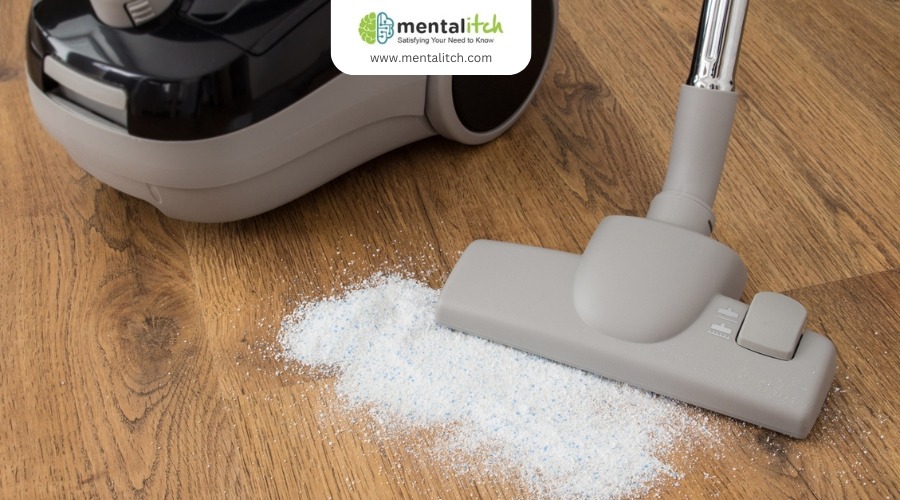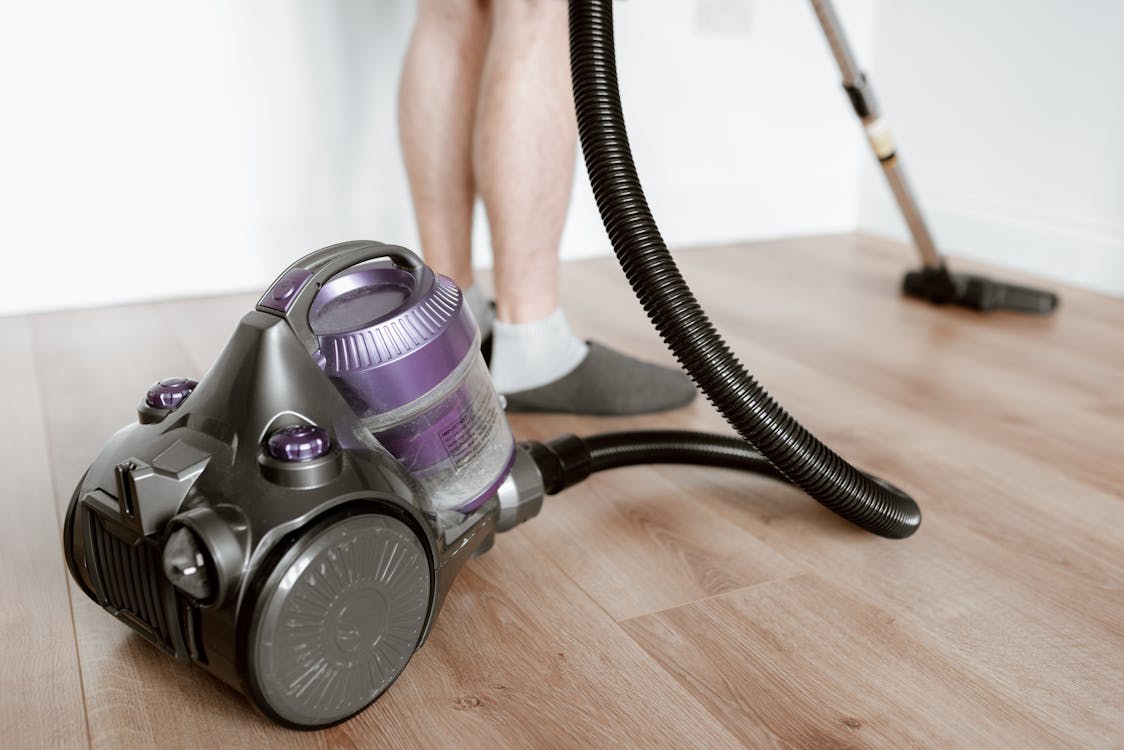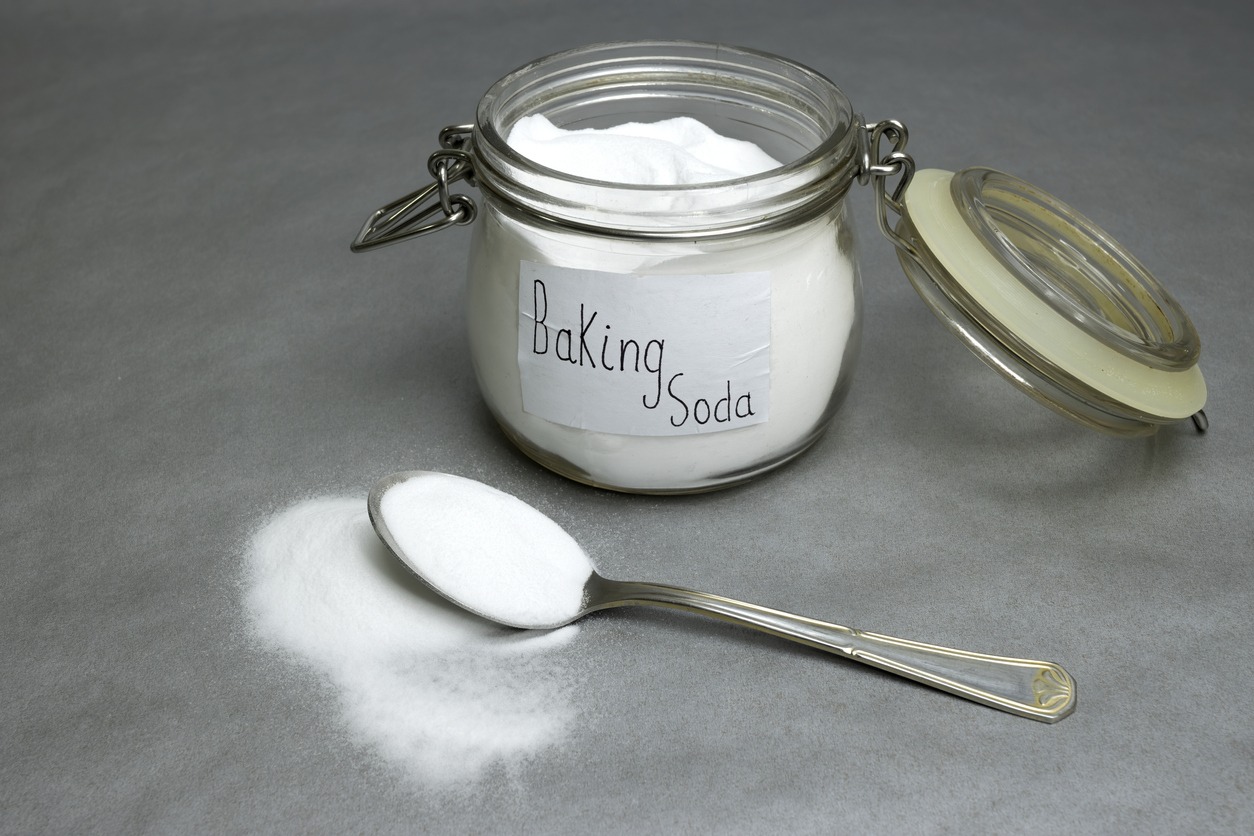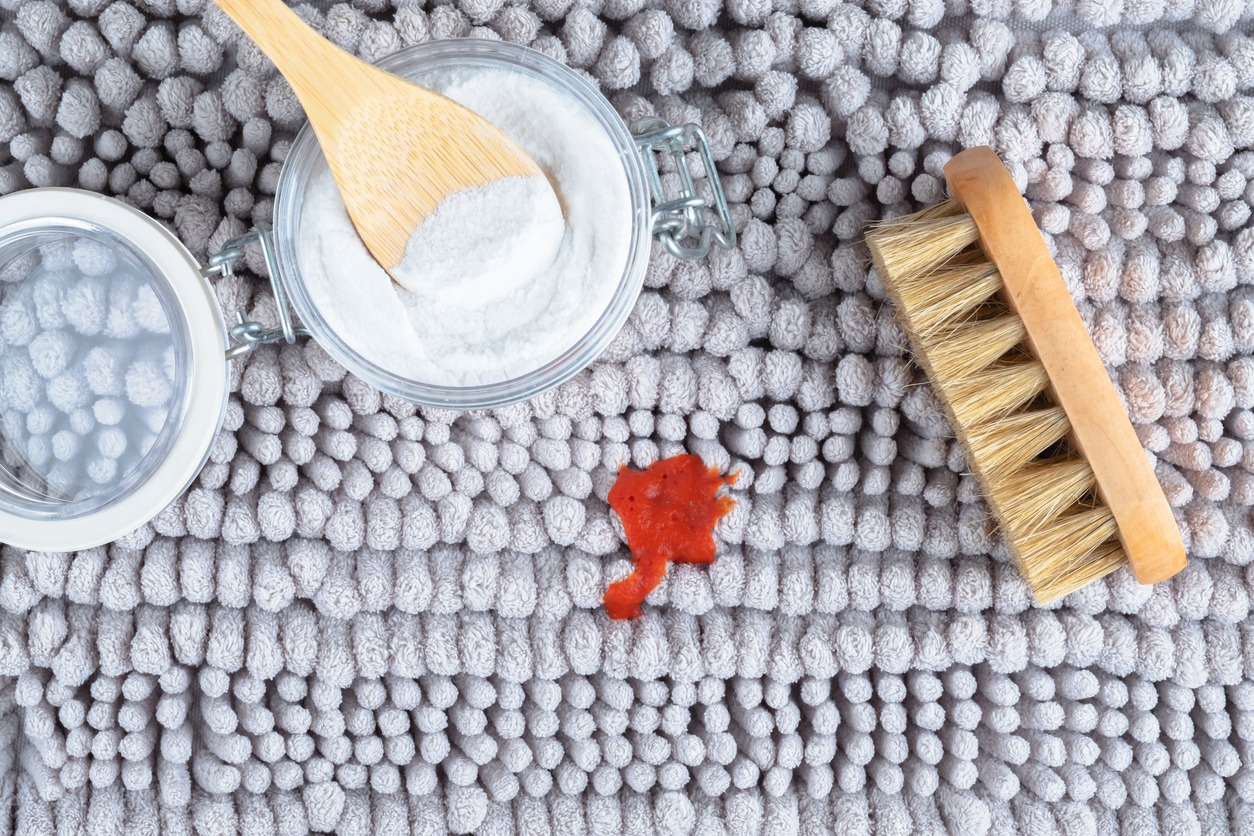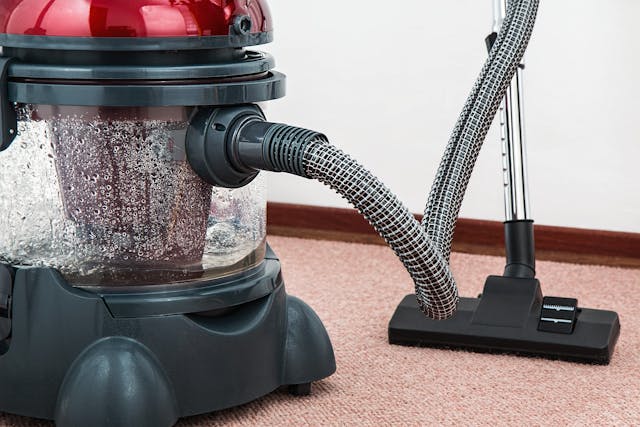In an age where baking soda is hailed as the Swiss Army knife of household cleaning, you might find yourself questioning if sprinkling it on your carpet before vacuuming is akin to throwing glitter at a fan—messy, but oddly satisfying.
Before you turn your vacuum into a potential science experiment, consider the impact on its filters, motor, and suction capabilities. While baking soda’s cleaning prowess is undeniable, your vacuum might not share the same enthusiasm for this powdery wonder.
So, before you proceed to sprinkle with abandon, let’s explore why moderation and understanding your vacuum’s mechanics could save you from an unexpected shopping trip for a new machine.
Understanding Vacuum Mechanics
While it’s essential to keep your home clean, understanding how baking soda affects vacuum mechanics is crucial to prevent damaging your appliance. When you sprinkle baking soda on your carpet or floors for cleaning, you’re introducing fine particles that can have unintended consequences for your vacuum.
These small particles can easily clump together with moisture, creating blockages that are too large for your vacuum’s filtration system to handle. This not only clogs your vacuum but also significantly reduces its suction power, affecting its overall performance.
Moreover, these fine particles of baking soda pose another risk. They can slip past the filters and reach the vacuum’s motor. Over time, this could lead to overheating, putting your vacuum at risk of potential motor damage.
To ensure the longevity and efficiency of your vacuum, it’s vital to manage the residue properly. This means being judicious with the amount of baking soda used and making sure it’s thoroughly vacuumed up. By doing so, you’ll keep your vacuum running smoothly without sacrificing its suction power or risking damage to its internal mechanics.
Baking Soda: Friend or Foe?
You’ve likely heard about the wonders of baking soda for cleaning, but when it comes to your vacuum, it’s a different story. The fine particles can clog filters and harm the motor, putting your vacuum’s health at risk.
Before you sprinkle that next batch, consider the potential damage and weigh your options carefully.
Baking Soda Effects
Is baking soda harming your vacuum more than it’s helping with cleaning tasks?
When you sprinkle baking soda for a deep clean, you mightn’t realize it can clump with moisture, creating obstacles your vacuum struggles to pick up. These clumps, along with the fine particles of baking soda, can clog your vacuum’s filters. This not only reduces the suction power but could potentially harm the motor.
Leftover baking soda residue isn’t innocent either; it could lead to overheating risks and further motor damage over time. While the incidents of baking soda causing vacuum damage are few, they’re significant enough to warrant caution.
Using baking soda carefully and sparingly ensures you don’t compromise your vacuum’s performance or longevity.
Vacuum Health Risks
Having explored how baking soda can challenge your vacuum’s efficiency, it’s also important to consider if it poses any health risks to your appliance. Here’s what you need to know about the risks of using baking soda in your vacuum:
- Clogs in Filters: Baking soda’s fine particles can easily clog vacuum filters, reducing their effectiveness.
- Reduced Suction Power: Clogged filters lead to diminished suction power, making your vacuum less efficient.
- Damage to Vacuum Motors: The strain from trying to suck through clogs can cause premature wear or damage to the motor.
- Risk to Certain Brands: Brands like Dyson specifically caution against using baking soda due to the high risk of clogging cyclones, indicating a universal risk across various vacuum models.
Avoid excessive use to prevent damage and ensure your vacuum’s longevity.
The HEPA Filter Dilemma
When using baking soda during your cleaning routine, it’s important to consider its potential impact on HEPA filters, which are designed to trap fine particles but can be clogged by the powder if not handled properly. HEPA filters are your vacuum’s first line of defense against microscopic pollutants, but when they meet with baking soda residue, the result can be less than ideal. This fine powder can easily sneak into the crevices of vacuum filters, leading to clogs that compromise the machine’s efficiency.
You mightn’t realize it, but excessive baking soda can significantly reduce the effectiveness of HEPA filters in trapping allergens and other fine particles. This issue is compounded when baking soda clumps together with moisture, forming larger particles that challenge the filtration system even further. To avoid such scenarios, regular maintenance of your vacuum’s HEPA filters is crucial, especially after sessions involving baking soda. Ensuring these filters are cleaned or replaced as needed will help maintain optimal suction power and filtration performance.
Moreover, choosing a vacuum equipped with a HEPA filter that’s specifically designed to handle fine particles, like baking soda, can mitigate potential clogging issues. This foresight can save you from the headache of dealing with reduced suction power and ensure your vacuum remains effective in keeping your home clean and allergen-free.
Electric Motor Vulnerabilities
Now, let’s talk about how baking soda affects the electric motors in your vacuum.
The fine particles of baking soda can lead to motor overheating risks and issues with dust accumulation.
These problems not only compromise your vacuum’s performance but can also shorten its lifespan significantly.
Motor Overheating Risks
Exposed to baking soda residue, your vacuum’s electric motor faces a higher risk of overheating, leading to significant damage. Here’s why you should be cautious:
- Baking Soda Clogs: Fine particles can block essential components, causing clogs that lead to motor overheating.
- Reduced Airflow: Limited airflow exacerbates the overheating issue, putting additional strain on the motor.
- Costly Repairs: Overheated motors often require expensive repairs or replacements, making it a pricey consequence of using too much baking soda.
- Performance Compromise: Motor overheating not only risks breakdowns but also leads to reduced suction power, undermining your vacuum’s efficiency.
Avoid excessive baking soda to protect your vacuum and maintain its performance. Regular filter cleaning is also crucial to prevent overheating risks.
Dust Accumulation Issues
Dust buildup, particularly from baking soda, can seriously undermine your vacuum’s motor and overall performance. When you sprinkle baking soda to freshen your carpets, you’re not just cleaning; you might inadvertently be clogging your vacuum’s filters. These clogs reduce suction power, making your vacuum work harder to pick up dirt and debris.
The fine particles of baking soda can also accumulate in the motor, posing a risk of damage over time. Moreover, baking soda clumps when it encounters moisture, creating larger particles that your vacuum might struggle to handle. To ensure your vacuum keeps running smoothly, it’s crucial to clean it regularly and remove any baking soda residue promptly.
This maintenance prevents overheating risks by ensuring airflow isn’t restricted, safeguarding your vacuum’s longevity.
Optimal Baking Soda Quantities
To ensure your vacuum’s longevity, it’s crucial to use baking soda in optimal quantities. While baking soda can be a fantastic aid in keeping your vacuum running smoothly and your home smelling fresh, knowing how much to use and the best way to apply it will save you from potential issues down the line. Here’s how to strike the right balance:
- Use a Light Layer: Avoid clogs and buildup by sprinkling a thin, even layer of baking soda across the surfaces you’re cleaning. This helps in maintaining your vacuum’s efficiency.
- Apply Sparingly: Too much baking soda can lead to residue build-up inside your vacuum. Use it sparingly to keep your machine in top condition.
- Allow Time to Settle: Before you start vacuuming, let the baking soda sit for a few minutes. This waiting period ensures it absorbs odors effectively.
- Invest in HEPA Filters: If you’re frequently using baking soda, consider a vacuum with HEPA filters. These are designed to capture fine baking soda particles and other small particles, ensuring a cleaner exhaust.
Potential Carpet Risks
While sprinkling baking soda on your carpets can leave them smelling fresh, it’s crucial to consider the potential risks to your carpet’s condition. Baking soda residue, if not thoroughly vacuumed, can weaken and damage carpet fibers over time. This damage occurs because the residue can attract dirt and debris, leading to a vicious cycle of dirt accumulation and potential harm to your carpet.
Moreover, using baking soda excessively doesn’t just risk leaving a residue; it can lead to clumps too large for your vacuum to remove effectively. These clumps not only make vacuuming more challenging but also risk embedding deeper into the carpet, making future cleaning efforts even more difficult. The result? A carpet with a gritty texture and potential for discoloration that detracts from its original beauty.
It’s vital to ensure that any baking soda used is thoroughly removed by proper vacuuming. Neglecting this step can leave your carpet harboring residue that not only damages the fibers but also diminishes the overall quality and appearance of your carpet over time. Remember, the goal is to maintain your carpet’s condition, not contribute to its demise.
Ideal Baking Soda Application
Understanding the risks associated with improper use, it’s crucial you apply baking soda correctly to avoid damaging your carpet and vacuum. Baking soda, with its fine particles, acts as an effective carpet deodorizer when used properly. Not all vacuums are designed to handle fine particles, so ensuring you’re not overdoing it’s key to keeping both your carpet and vacuum in top shape.
Here’s how to make sure your baking soda application is safe to use:
- Apply a Thin Layer: Spread a minimal, even layer across the carpet. This helps in absorbing odors efficiently without causing clogs in your vacuum.
- Use Sparingly: To prevent residue buildup and potential damage, use only a small amount. This ensures your vacuum can handle fine particles without strain.
- Allow Time to Work: Let the baking soda sit for at least an hour. For stronger odors, consider leaving it longer for more thorough deodorization.
- Avoid Excess: Be careful to avoid spreading excessive baking soda. Leftover residue can weaken carpet fibers over time and compromise their integrity.
Following these steps ensures that baking soda remains a safe and effective solution for keeping your carpets fresh without risking damage to your cleaning equipment.
DIY Carpet Freshener Recipe
Creating your own carpet freshener with baking soda and essential oils is a simple, yet effective way to keep your home smelling great. Baking soda is a powerhouse when it comes to eliminating odors trapped in your carpet. By absorbing these odors, it leaves your space feeling fresher. When you mix baking soda with your favorite essential oils, you not only tackle unpleasant smells but also add a pleasant fragrance to your home. This DIY method is safe for most vacuum cleaners when used in moderation, ensuring your carpets can stay fresh without the worry of damaging your equipment. Regular use can keep odors at bay and maintain a welcoming atmosphere in your home.
To make your DIY carpet freshener even more interesting, here’s a quick recipe table:
| Ingredient | Quantity | Purpose |
|---|---|---|
| Baking Soda | 1 cup | Odor Absorber |
| Essential Oil (Lavender) | 10-15 drops | Fragrance |
| Essential Oil (Lemon) | 10-15 drops | Fragrance |
| Mixing Bowl | 1 | Mixing |
| Airtight Container | 1 | Storage |
Mix the baking soda with your chosen essential oils in the bowl. Once thoroughly combined, transfer to the airtight container. Sprinkle lightly over your carpet, let sit for a few minutes, then vacuum as usual. This simple recipe will help tackle those stubborn odors and keep your carpet smelling fresh.
Preventing Vacuum Damage
To prevent your vacuum from suffering damage, it’s crucial to use baking soda carefully and maintain your appliance properly. Baking soda, while an effective cleaning agent, can be a double-edged sword for your vacuum cleaner. If not used wisely, it can lead to clogs and residue buildup, especially in the filters.
Here are some essential tips to avoid such issues:
- Use Baking Soda Sparingly: Apply it in thin, even layers across the surface you’re cleaning. This prevents the vacuum filters from getting clogged with excessive baking soda.
- Opt for a HEPA Filter Vacuum: These are designed to trap fine particles like baking soda efficiently, minimizing the risk of clogs and ensuring cleaner air exhaust.
- Regularly Clean the Vacuum Filters: After vacuuming baking soda, clean the filters to remove any residue. This maintains the vacuum’s suction power and prevents damage from accumulated baking soda residue.
- Choose a Strong Suction Vacuum: A vacuum with powerful suction can pick up baking soda more effectively, reducing strain on the motor or filters and preventing clogs in the vacuum canister.
Additional Details
- Be sure to learn more about how baking soda ruin my vacuum
Conclusion
So, will baking soda ruin your vacuum? Not if you’re careful. Stick to small amounts and avoid direct application on filters or inside the vacuum. Remember, it’s all about balance. Using baking soda as a carpet freshener can be a game-changer for your home’s cleanliness, but overdoing it risks your vacuum’s health. Keep your vacuum maintained, and don’t skip on regular check-ups.
With these precautions, you can enjoy the benefits without the worry. Happy cleaning!

